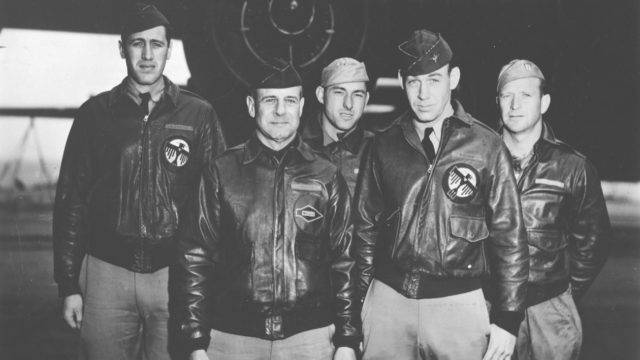Andrew Hunter, the US Air Force’s assistant for procurement, announced at the Air and Space Association’s conference in Washington that the presentation of the latest B-21 Raider strategic bomber is scheduled for the first week of December. The B-21 is scheduled to enter service with the USAF in the mid-1920s. While the final details are yet to be determined, the presentation is likely to take place at the Northrop Grumman factory in Palmdale, California. At the moment, six Raiders are in various stages of construction.
So far, very little is known about the aircraft. The artistic visions show a plane built in a flying wing configuration, which looks like a scaled down version of the B-2, but in reality there is no evidence that the new bomber will look like this. Although it must be admitted that this is quite likely, since the flying wing layout is in many respects optimal for a long-range aircraft with reduced radar detectability, and Northrop already has experience building bombers of this shape.
-ADVERTISEMENT-

Northrop’s vice president, Thomas Jones, stated during the conference that while the B-21 may actually resemble the B-2 from the outside, in many respects it is much more modern. The main advantage over the older brother is to be a modular software system with open architecture, thanks to which subsequent B-21 upgrades will be much faster and easier. The B-21 is expected to remain modern for many decades.
The second important improvement is to be lower operating costs. Spirit cost approximately $ 2 billion apiece and requires special hangar conditions to maintain the effectiveness of the coatings that reduce the effective reflection surface of the radar waves. For this reason, each hour of a B-2A flight translates into many hours of service work, and optimal conditions for stationing are provided only in one base in the world – Whiteman, Missouri.

B-2A Spirit named its own Spirit of South Carolina.
(US Air Force / Greg L. Davis)
From LRS-B to B-21
The program to build a new long-range bomber dates back to the beginning of the twenty-first century, when the Department of Defense and the US Air Force command began concept studies on a next-generation bomber. Work was stopped in 2009, but the Air Force immediately began a similar program to select a new long-range strike aircraft using solutions used in F-22 and F-35 fighters with reduced detectability. Thus the LRS-B (Long Range Strategic-Bomber) program was born.
On July 9, 2014, invitations to tender were sent. Northrop Grumman competed with a consortium of Boeing and Lockheed Martin. After the initial assessment of the designs, the design proposed by Northrop was sent for further work. The company invited to cooperate, inter alia, GKN Aerospace, BAE Systems, Pratt & Whitney, Spirit AeroSystems and Collins Aerospace. The result of the competition was protested by the losing consortium, but the Government Accountability Office upheld the result in 2015, which allowed work on a new bomber to begin.

Artistic vision of the B-21 at the Ellsworth base hangar.
(Northrop Grumman)
In 2018, the project successfully passed the critical appraisal, which made it possible to start work on the construction of prototypes. Two have been completed to date. The first will be used for flight tests due to begin in 2023, and the second will be used for ground tests. The tests will be conducted at the Edwards base in California, and the 420th Experimental Squadron will be reactivated in 2019.
The bomber received the official name – B-21 Raider – in 2016. She was chosen in a plebiscite organized among American aviators. The name commemorates Lieutenant Colonel Jimmy Doolittle and eighty airmen who took part in the first American raid on Tokyo in 1942. Sixteen B-25 Mitchell bombers took off from the aircraft carrier USS Hornet (CV 8). The whole group was later nicknamed the Doolittle Raiders.

Number one crew from the Tokyo raid. Second from left Lieutenant Colonel Jimmy Doolittle.
(USAAF)
The B-21 is to replace the B-1B Lancer and B-2A Spirit bombers in service and become a pillar of the air leg of the American nuclear triad. Its main task will be to carry nuclear weapons, but it will also be able to carry a wide range of conventional long- and short-range weapons. It is not known what the lifting capacity will be. In addition, the bomber is to be equipped with devices enabling the implementation of intelligence, reconnaissance, electronic warfare and other tasks. The plane will be able to use many of these possibilities for its own needs, for example to locate targets whose location has not been previously determined by reconnaissance means.
Analysts speculate that it is to be two-thirds the size and weight of the B-2, and a redesigned trailing edge to be straighter than the B-2, where it resembles a sawtooth. In addition, the aircraft is designed from the beginning as an optional unmanned aerial vehicle. This option will not be available upon entry into service, but thanks to this open architecture, it can be implemented in the future.
Stealth Fanfare
Since the B-21 is constantly compared to the B-2, it is worth mentioning what the first public presentation of the latter looked like. It took place on November 22, 1988 in the same place where the presentation of the B-21 is planned. About 2,000 guests attended the presentation, including forty Air Force generals guarded by two hundred guards with dogs.
At the moment of the opening of the hangar gates, the military band played the signal “Stealth Fanfare” composed especially for the occasion. The airport tractor towed the B-2 from the hangar in such a way that the viewers could only see it from the front. It was not a ready plane. Apart from a few elements, it was mainly lacking engines. According to many journalists at the time, the presentation of a top-secret aircraft was forced by marketing considerations. The Air Force and Northrop wanted to maintain support and funding for the construction of an extremely expensive bomber at a time when many people questioned its construction due to warming relations between the United States and the Soviet Union led by Mikhail Gorbachev.
The presentation of the B-21 will take place in a different atmosphere. After several quiet decades, Russia again poses a major threat to world peace, and its leader is threatening with the use of nuclear weapons. In addition, a Chinese dragon is lurking behind the Pacific. Under these conditions, Northrop should not be afraid of the drastic order limitation that has hit the B-2, and can expect to produce more than a hundred copies of the Raider.
See also: Infantry and Artillery USMC practice role swapping
USAF

